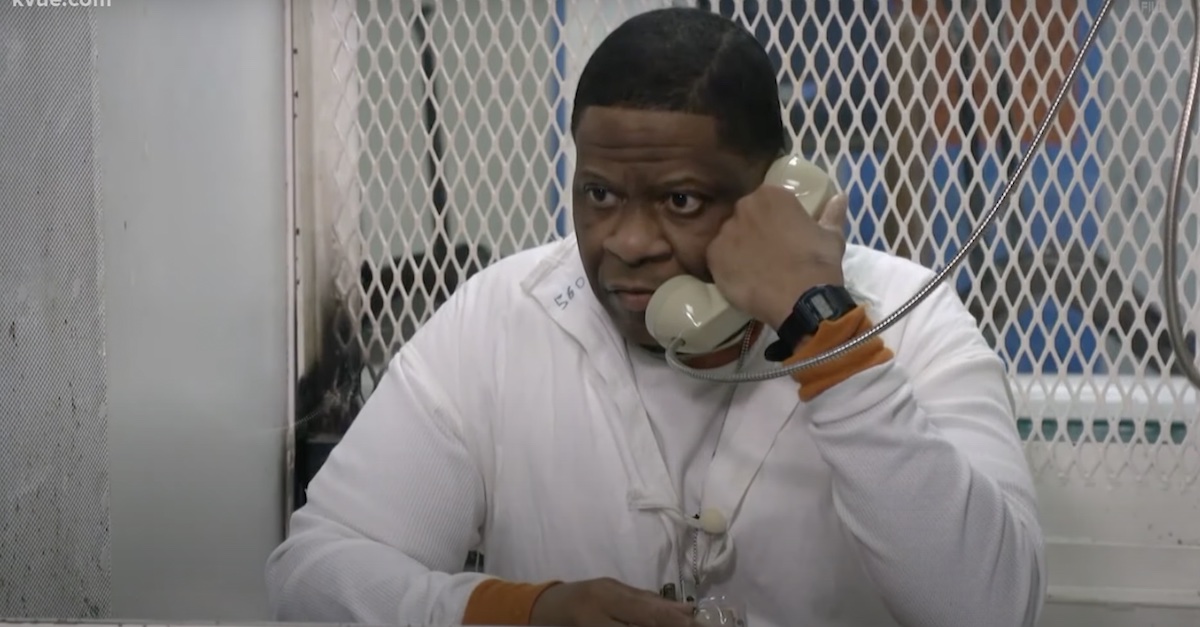
Rodney Reed
The Supreme Court of the United States on Monday granted certiorari in a case brought by death row petitioner Rodney Reed, asking the high court to resolve a circuit split on a statute of limitations issue related to Reed’s DNA testing request.
Reed, who claims he’s innocent of abducting, raping and murdering 19-year-old Stacey Stites in Bastrop County, Texas in 1996, presented only one question to be answered in his long and winding capital case:
[W]hether the statute of limitations for a § 1983 claim seeking DNA testing of crime-scene evidence begins to run at the end of state-court litigation denying DNA testing, including any appeals (as the Eleventh Circuit has held), or whether it begins to run at the moment the state trial court denies DNA testing, despite any subsequent appeal (as the Fifth Circuit, joining the Seventh Circuit, held below).
Reed, 54, says that SCOTUS held in Skinner v. Switzer that state inmates such as himself can, as the petition put it, “pursue post-conviction claims for DNA testing of crime-scene evidence in a civil rights action under 42 U.S.C. § 1983”:
This case presents an exceptionally important issue that has divided the courts of appeals: when the statute of limitations begins to run for an action under 42 U.S.C. § 1983 seeking DNA testing of crime-scene evidence on the ground that available state procedures are constitutionally inadequate. The Eleventh Circuit holds that the period begins to run from the end of state-court litigation denying DNA testing, including any appeals. In contrast, the Fifth Circuit here, joining the Seventh Circuit, runs the statute of limitations from the moment the state trial court denies DNA testing, despite any appeal.
The stakes could not be higher: Petitioner Rodney Reed faces a sentence of death for a murder he has steadfastly denied committing. But the Fifth Circuit dismissed his DNA testing claims as untimely. Had Mr. Reed brought his claims in the Eleventh Circuit, the court would have proceeded to the weighty question whether the Constitution entitles him to testing that could prove his innocence.
The Supreme Court has now agreed to review the question of when the clock started on the statute of limitations for the purposes of Reed’s § 1983 claim in favor of DNA testing amid his assertions of innocence.
The court also granted the Constitutional Accountability Center leave to file a brief as an amicus curiae in the case.
Reed’s lawyers have pointed to Stites’ then-fiancé Jimmy Fennell as a possible suspect, and claimed that Reed’s consensual relationship with Stites explained why Reed’s DNA matched “sperm found in Stites’ vaginal tract”:
Mr. Reed was convicted in 1998 of the murder of Stacey Stites. At the time of her murder, Stites was engaged to Jimmy Fennell, a local police officer. Fennell was the last person who said he saw Stites alive. He proved deceptive on polygraph tests and at first invoked the Fifth Amendment. Even so, investigators did not search the apartment he shared with Stites. Instead, the prosecution charged Reed with the crime.
The state rested its case against Reed on a single piece of physical evidence: Reed’s DNA matched sperm found in Stites’ vaginal tract. Mr. Reed, who is black, protested his innocence, admitting that he was having a clandestine sexual relationship with Stites, who was white, as is Fennell. The state pressed forward anyway. Relying on Fennell’s timeline—that he spent the night with Stites before she was found dead the next morning—plus expert statements about the longevity of sperm, the prosecution argued that Reed kidnaped and raped Stites in the early-morning hours before her death. An all-white jury agreed, convicting Mr. Reed and sentencing him to death.
Reed’s team also noted that Fennell, a former police officer, went on to be convicted in a sexual assault case. Indeed, Reed’s petition claimed that Fennell called him the N-word during an alleged confession to others behind prison walls:
Among other things, officers who worked with Fennell reported that he gave them a conflicting account of the night before the crime and that he said a month before the murder that Stites was ‘f***king a n***er.’
Individuals unrelated to Reed said that Stites and Fennell had a tumultuous and violent rela- tionship. And in 2008, while Fennell was in prison for kidnaping and sexually assaulting a woman while on police duty, he told a fellow inmate that he “had to kill [his] n***r-loving fiancé[e].” Id.
Stacey Stites’s surviving family, however, have said that there is a reason Reed was accused (albeit not convicted) of other rapes in the past.
“Rodney Reed is a serial rapist and a murderer,” Stites’s sister Debra Oliver reportedly said last year.
[Image via KVUE screengrab]